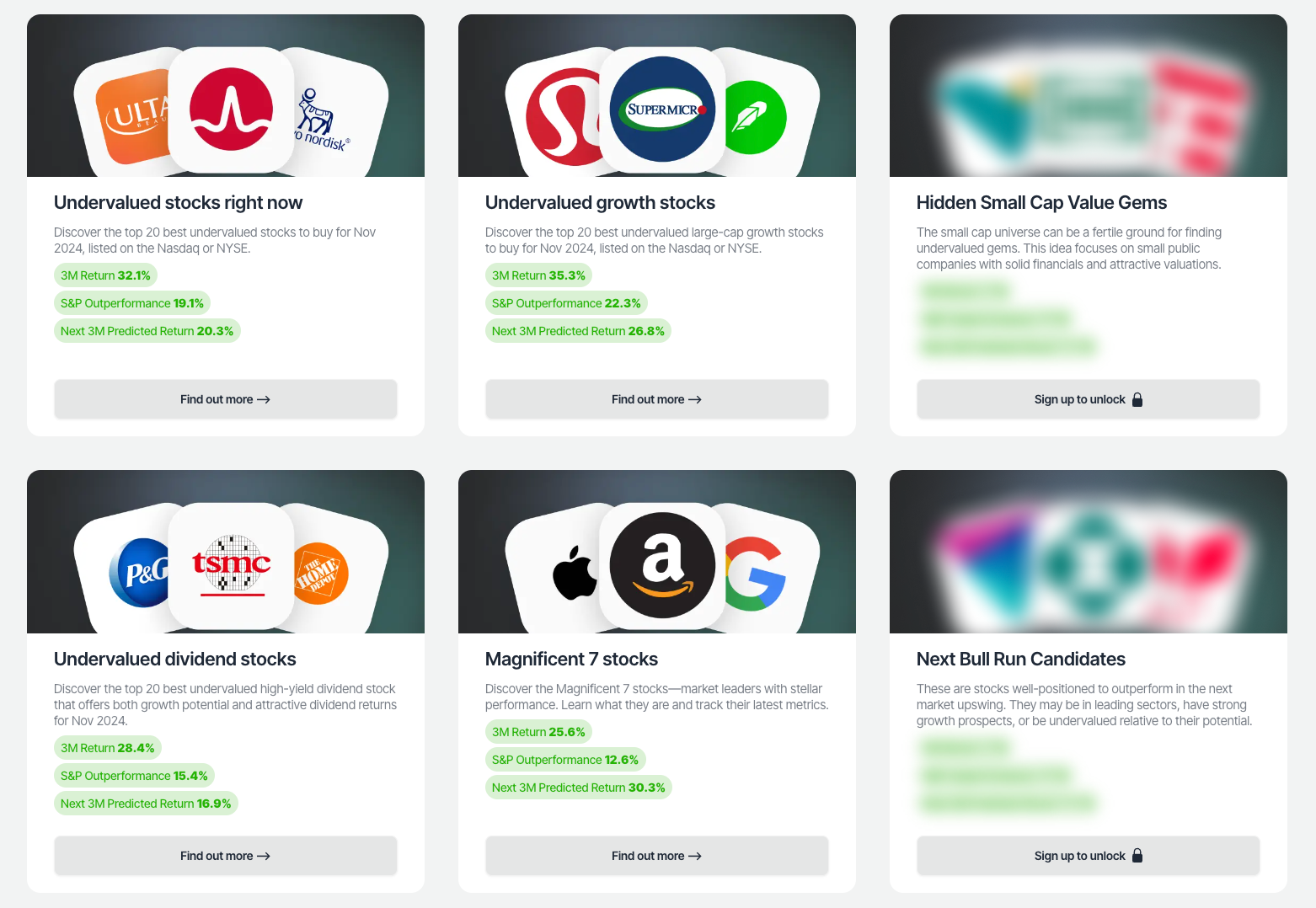How NFLX (Netflix) Makes Money in 2025: A Deep-Dive With Income Statement
Welcome to the Value Sense Blog, your resource for insights on the stock market! At Value Sense, we focus on intrinsic value tools and offer stock ideas with undervalued companies. Dive into our research products and learn more about our unique approach at valuesense.io
Explore diverse stock ideas covering technology, healthcare, and commodities sectors. Our insights are crafted to help investors spot opportunities in undervalued growth stocks, enhancing potential returns. Visit us to see evaluations and in-depth market research.
Understanding how a streaming media giant like Netflix makes money is essential for investors and anyone interested in the business of digital entertainment and content distribution. In this post, we break down Netflix's quarterly income statement (Q3 2025) using a Sankey chart to visualize the financial flows — what comes in, where it goes, and what's left as profit.
Quick Netflix Overview
 Income Statement Overview](https://blog.valuesense.io/content/images/2025/10/NFLX_income_1761920316.png)
Netflix operates a global subscription-based streaming service, offering on-demand movies, TV series, and original content to consumers across more than 190 countries. Revenue comes primarily from monthly subscription fees paid by individual and family accounts. The business is segmented by geography: UCAN (United States & Canada), EMEA (Europe, Middle East & Africa), LATAM (Latin America), and APAC (Asia-Pacific), each contributing distinct growth profiles and margins.
Revenue Breakdown
- Total Revenue (Q3 2025): $11.5B (+17.2% YoY)
- UCAN Revenue: $5.07B (44.1% of total, +17.3% YoY)
- EMEA Revenue: $3.70B (32.1% of total, +18.0% YoY)
- LATAM Revenue: $1.37B (11.9% of total, +10.5% YoY)
- APAC Revenue: $1.37B (11.9% of total, +21.3% YoY)
- Growth is powered by subscriber additions in APAC and EMEA, price increases, and expanding original content offerings.
Gross Profit and Margins
- Gross Profit: $5.35B (46.4% gross margin)
- Cost of Revenue: $6.16B (+20.4% YoY)
- Netflix maintains robust margins due to its scalable digital platform and efficient content licensing and production.
- Most costs come from content acquisition and production, streaming infrastructure, and royalties.
Operating Income and Expenses
- Operating Income: $3.25B (+11.6% YoY, 28.2% margin)
- Operating Expenses: $2.10B (+16.8% YoY)
- R&D: $0.85B (+16.1% YoY, 7.4% of revenue) — Focused on improving streaming technology, personalization algorithms, and platform features.
- SG&A: $1.24B (+17.3% YoY, 10.8% of revenue) — Includes marketing, subscriber acquisition, and general corporate overhead.
- Netflix continues to prioritize innovation and invest in global growth while maintaining operational efficiency.
Net Income
- Pre-Tax Income: $3.11B (+15.0% YoY, 27.0% margin)
- Income Tax: $0.56B (18.1% effective tax rate)
- Net Income: $2.55B (+7.8% YoY, 22.1% net margin)
- Netflix converts a significant portion of sales into profit due to its scalable subscription model and global reach.
Most investors waste time on the wrong metrics. We've spent 10,000+ hours perfecting our value investing engine to find what actually matters.
Want to see what we'll uncover next - before everyone else does?
Find Hidden Gems First!
What Drives Netflix's Money Machine?
- Subscription Revenue: Over 99% of revenue comes from monthly subscriptions across global regions.
- Subscriber Growth: Q3 2025 saw strong net additions, especially in APAC (+21.3% YoY revenue growth) and EMEA (+18.0% YoY).
- Content Investment: Netflix invests heavily in original programming, which drives subscriber engagement and retention.
- Emerging Growth Areas: Expansion into gaming and live events, though not yet profitable, represent future growth opportunities.
Visualizing Netflix's Financial Flows
The Sankey chart below visualizes how each dollar flows from gross revenue, through costs and expenses, down to net income. This helps investors spot where value is created, what areas weigh on profits, and how efficiently the company operates.
- Most revenue flows into gross profit, with operating expenses (especially content costs and SG&A) taking the largest chunk.
- Even after large investments in content and technology, 22.1% of revenue drops to the bottom line.
Key Takeaways
- Netflix's money comes overwhelmingly from subscription fees
- High gross and net margins illustrate the power of Netflix's scalable digital business model
- Heavy investment in original content and technology, balanced by efficiency in operating costs
- Ongoing growth is driven by international expansion, subscriber growth, and new content verticals
Explore More Investment Opportunities

For investors seeking undervalued companies with high fundamental quality, our analytics team provides curated stock lists:
📌 50 Undervalued Stocks (Best) overall value plays for 2025
📌 50 Undervalued Dividend Stocks (For income-focused investors)
📌 50 Undervalued Growth Stocks (High-growth potential with strong fundamentals)
🔍 Check out these stocks on the Value Sense platform for free!
FAQ About Netflix's Income Statement
1. What is the main source of Netflix's revenue in 2025?
Netflix generates over 99% of its revenue from monthly subscription fees paid by users worldwide. Advertising and other sources are not material in Q3 2025.
2. How profitable is Netflix in Q3 2025?
Netflix reported net income of $2.55B in Q3 2025, with a net margin of approximately 22.1%, reflecting strong profitability driven by its scalable platform and global subscriber base.
3. What are the largest expense categories for Netflix?
The biggest expenses on Netflix's income statement are content acquisition and production costs, followed by operating expenses, particularly Research & Development (R&D) at $0.85B and Sales, General & Administrative (SG&A) at $1.24B in Q3 2025, as Netflix prioritizes technology and global marketing.
4. Why does APAC operate at a loss?
APAC, despite generating $1.37B in revenue, posted an operating loss of over $XXM in Q3 2025. This is because Netflix aggressively invests in local content production and market expansion, believing these will drive long-term subscriber growth—even if the division is unprofitable today.
5. How does Netflix's effective tax rate compare to previous years?
Netflix's effective tax rate in Q3 2025 was 18.1%, consistent with previous years. This moderate rate is primarily due to international structuring and tax benefits from share-based compensation.
